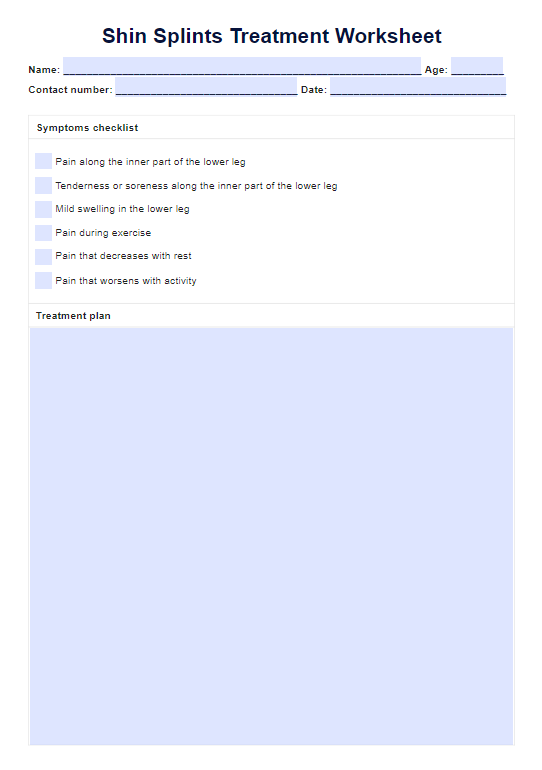Rest, ice, and over-the-counter pain relievers are effective treatments for shin splints. Additionally, shoe inserts can support and reduce stress on bone tissue around the shin bones.

Shin Splints Treatment Worksheet
The Shin Splints Treatment Worksheet provides medical practitioners with practical strategies, including rest, ice, anti-inflammatory meds, exercises, and prevention tips.
Shin Splints Treatment Worksheet Template
Commonly asked questions
To quickly alleviate the dull pain of shin splints, rest from high-impact activities, apply a cold pack to the affected area, and use compression. Incorporate gentle stretching exercises and cross-train with low-impact sports like swimming or cycling. However, if individuals experience any exercise pain during workout routines, they should consult their doctor immediately.
A stress fracture is a small crack in the bone often caused by overuse and repetitive activities. It is sometimes confused with shin splints, as both conditions can cause pain in the lower leg. Unlike shin splints, which affect muscle and tendon tissues, a stress fracture specifically involves the bone.
EHR and practice management software
Get started for free
*No credit card required
Free
$0/usd
Unlimited clients
Telehealth
1GB of storage
Client portal text
Automated billing and online payments











